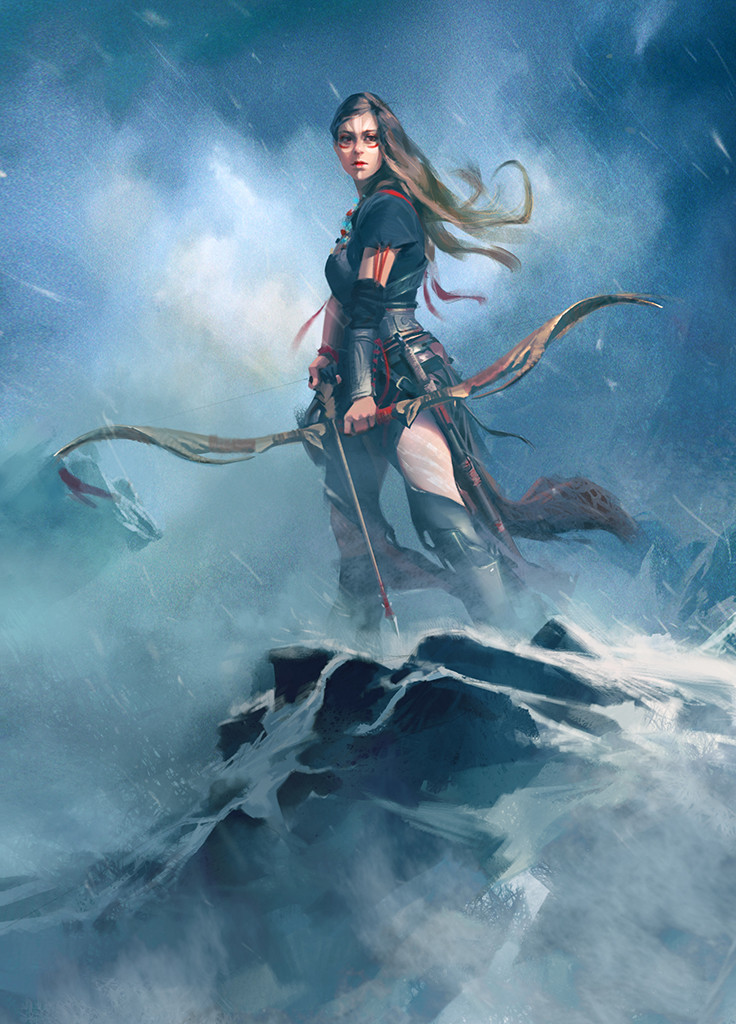
Martial Ranger
Creating a Ranger
As you create your ranger character, consider the nature of the training that gave you your particular capabilities. Did you train with a single mentor, wandering the wilds together until you mastered the ranger’s ways? Did you leave your apprenticeship, or was your mentor slain making you unearth a weakness you never knew, causing you to increase your senses? Or perhaps you learned your skills as part of a band of rangers affiliated with a druidic circle. You might be self taught, a recluse who learned combat skills, tracking, and even a mystical connection to nature through the necessity of surviving in the wilds. What’s the source of your ability to ascertain the weakness of an enemy? Did a monster kill someone you loved or destroy your home village? Or did you see too much of the destruction these monsters cause and commit yourself to discovering their vulnerabilities? Is your adventuring career a continuation of your work in protecting the borderlands, or a significant change? What made you join up with a band of adventurers? Do you find it challenging to teach new allies the ways of the wild, or do you welcome the relief from solitude that they offer?
Quick Build
You can make a ranger quickly by following these suggestions. First, make Dexterity your highest ability score, followed by Wisdom, (Some rangers who focus on Great Weapon Fighting fighting make Strength higher than Dexterity). Second, choose the outlander background.
Class Features
As a ranger, you gain the following class features
Hit Points
- Hit Dice: 1d10 per ranger level
- Hit Points at 1st Level: 10 + your Constitution modifier
- Hit Points at Higher Levels: 1d10 (or 6) + your Constitution modifier per ranger level after 1st
Proficiencies
- Armor: Light armor, medium armor, shields
- Weapons: Simple weapons, martial weapons
- Tools: Alchemist Kit
- Saving Throws: Strength, Dexterity
- Skills: Choose three from Animal Handling, Athletics, Insight, Investigation, Nature, Perception, Stealth, and Survival
Equipment
You start with the following equipment, in addition to the equipment granted by your background:
- (a) scale mail or (b) leather armor
- (a) two simple melee weapon or (b) a martial weapon
- (a) a dungeoneer's pack or (b) an explorer's pack
- A longbow and a quiver of 20 arrows
The Ranger
| Level | Proficiency Bonus | Features | Tricks Known |
|---|---|---|---|
| 1st | +2 | Keen Eye, Pathfinder | - |
| 2nd | +2 | Fighting Style, Tricks of the Trade | 2 |
| 3rd | +2 | Primeval Awareness, Ranger Conclave | 2 |
| 4th | +2 | Ability Score Improvement | 3 |
| 5th | +3 | Extra Attack, Overload | 3 |
| 6th | +3 | Keen Eye and Pathfinder Improvements | 4 |
| 7th | +3 | Ranger Conclave | 4 |
| 8th | +3 | Ability Score Improvement, Feral Instinct | 4 |
| 9th | +4 | Overload Improvement | 5 |
| 10th | +4 | Pathfinder Improvement, Hide in Plain Sight | 5 |
| 11th | +4 | Ranger Conclave | 5 |
| 12th | +4 | Ability Score Improvement | 6 |
| 13th | +5 | Overload Improvement | 6 |
| 14th | +5 | Keen Eye Improvement, Vanish | 6 |
| 15th | +5 | Ranger Conclave | 7 |
| 16th | +5 | Ability Score Improvement | 7 |
| 17th | +6 | Overload Improvement | 7 |
| 18th | +6 | Feral Senses | 8 |
| 19th | +6 | Ability Score Improvement | 8 |
| 20th | +6 | Foe Slayer | 8 |
Keen Eye
You are an expert at discovering an enemy's weakness. You discover flaws in their strategy, patterns in their behaviors, and weak points in their fighting techniques. The more you observe the enemy, the more you exploit these weaknesses.
Marking a Creature
On your turn, as a bonus action, you can attempt to chronicle a creature that you can see weaknesses. You make a Wisdom check (Wisdom + Proficiency) against the target's Armor Class. On succession, you place a mark on the creature, up to a total of 3 marks (one for each successful check made). If the marked target dies before the mark(s) is expended, all marks on that creature dissipate.
Expending Marks
On successfully hitting a marked creature you can expend your marks, all marks on that creature are expended in the process. Each mark is cumulative with the previous mark, which is reflected in the description as shown in the Keen Eye Marks table. The table that you use is based on your level in this class.
For example, when you consume the marks on a creature that has two marks. Both marks are expended and you gain the effects of 1 and 2 from the Keen Eye table.
You can utilize marks a number of times up to 1 + Wisdom modifier per short rest or long rest.
Keen Eye Marks (Level 1 - 5)
| Marks | Description |
|---|---|
| 1 | the target takes an additional 1d8 damage |
| 2 | your next attack roll made against this target is made with advantage |
| 3 | the target is stunned until the end of your next turn |
Keen Eye Marks (Level 6 - 13)
| Marks | Description |
|---|---|
| 1 | the target takes an additional 2d8 damage |
| 2 | your next attack roll made against this target is made with advantage, and the target's movement is reduced by 10ft. until the end of its next turn |
| 3 | the target is stunned until the end of your next turn |
Keen Eye Marks (Level 14 - 20)
| Marks | Description |
|---|---|
| 1 | the target takes an additional 3d8 damage |
| 2 | your next attack roll made against this target is made with advantage, and the target's movement is reduced by 10ft. until the end of its next turn |
| 3 | the target is stunned and has it's AC reduced by 2 until the end of your next turn |

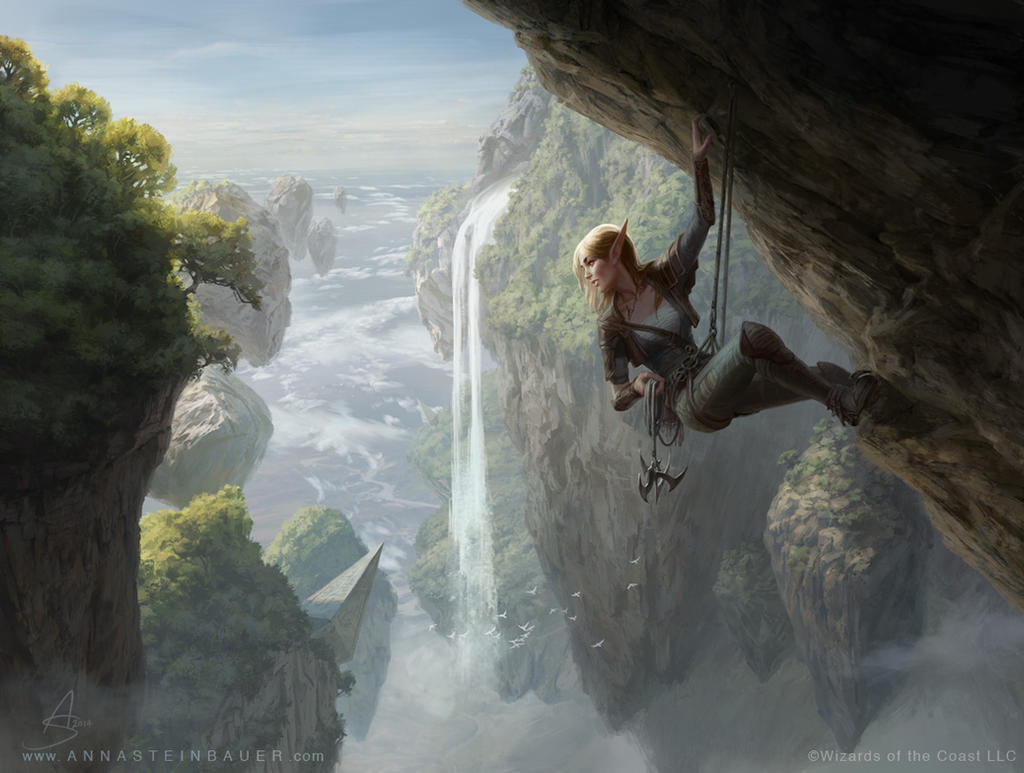

Pathfinder
Your time spent living in the wilds, exploring, and fighting the monsters that live in the wood has gifted you with finely honed senses making it difficult to disorient or surprise you or hinder your movement.
- You always know which direction is north.
- You have advantage on saving throws against spells that would disorient you (confusion, hallucinatory terrain, maze).
- Non-magical difficult terrain does not affect you. If you are alone, you can move stealthily at a normal pace.
- You can spend two hours foraging and provide food for a number of people equal to your level.
At 6th level, you can use the Dash or Disengage action as a bonus action on your turn.
At 10th level, difficult terrain created by a magical means no longer affects your movement.
Fighting Style
At 2nd level, you adopt a particular style of fighting as your specialty. You can't take a Fighting Style option more than once, even if you later get to choose again.
Archery
You gain a +2 bonus to attack rolls you make with ranged weapons.
Defense
While you are wearing armor, you gain a +1 bonus to AC.
Dueling
When you are wielding a melee weapon in one hand and no other weapons, you gain a +2 bonus to damage rolls with that weapon.
Great Weapon Fighting
When you roll a 1 or 2 on a damage die for an attack you make with a melee weapon that you are wielding with two hands, you can reroll the die and must use the new roll, even if the new roll is a 1 or a 2. The weapon must have the two-handed or versatile property for you to gain this benefit.
Thrown Weapon Fighting
You can draw a weapon that has the thrown property as part of the attack you make with the weapon. In addition, when you hit with a ranged attack using a thrown weapon, you gain a +1 bonus to the damage roll.
Two-Weapon Fighting
When you engage in two-weapon fighting, you can add your ability modifier to the damage of the second attack.
Tricks of the Trade
Your time in the wilderness has taught you how to gain the upper hand in a situation. You learn to fashion special arrows, augment weaponry, create traps, and concoction medical salves with unique effects.
At 2nd level, you gain two tricks of your choice. Your trick options are detailed under Tricks in the class description. When you gain certain ranger levels, you gain additional tricks of your choice, as shown in the Tricks Known column of the Ranger table.
Additionally, when you gain a level in this class, you can choose one of the tricks you know and replace it with another trick. You can use this feature a number of times equal
to 1 + your ranger level per long rest.
Primeval Awareness
Beginning at 3rd Level, you can use your action and expend an use of this feature to focus your awareness on the region around you.
For 1 minute, you know the location of any beasts, fey, humanoids, and monstrosities within 60 feet of you that are not behind total cover. You know the type of any being whose presence you sense, but not its identity.
You can use this feature a number of times equal to your proficiency bonus, and you regain all expended uses when you finish a long rest.
Ranger Conclave
At 3rd level, you choose an archetype that you strive to emulate: Expertise, Nature, The Survival, and Wildlife, all detailed at the end of the class description. Your choice grants you features at 3rd level and again at 7th, 11th, and 15th level.




Ability Score Improvement
When you reach 4th level, and again at 8th, 12th, 16th, and 19th level, you can increase one ability score of your choice by 2, or you can increase two ability scores of your choice by 1. As normal, you can't increase an ability score above 20 using this feature.
Extra Attack
Beginning at 5th level, you can attack twice, instead of once, whenever you take the Attack action on your turn.
Overload
Starting at 5th level, you have uncovered a way to increase the effectiveness of your tricks but at a cost. When you use an oil or trap you can expend an additional use of tricks of the trade to increase damage of that trick by 1d8.
Additionally, when you use a concoction you can increase the number of targets it can effect by one, or increase the healing it does by 1d8.
The maximum number of uses you can expend on a trick increases by 1 at 9th (3), 13th (4), and 17th (5) level.
Feral Instinct
Beginning at 8th level, you have advantage on initiative rolls.
Additionally, if you are surprised at the beginning of combat and aren't incapacitated, you can act normally on your first turn, as long as you use your Keen Eye feature before doing anything else on that turn.
Hide in Plain Sight
Starting at 10th level, when you attempt to hide on your turn, you can opt to not move. If you avoid moving, creatures that attempt to detect you take a -10 penalty to their Wisdom (Perception) checks until the start of your next turn. You lose this benefit if you move or fall prone. You are automatically detected if any effect or action causes you to no longer be hidden. If you are still hidden on your next turn, you can continue to remain motionless and gain this benefit until you are detected.
Vanish
Starting at 14th level, you can use the Hide action as a bonus action on your turn. Also, you can't be tracked by non magical means, unless you choose to leave a trail.
Feral Senses
At 18th level, when you attack a creature you can't see, your inability to see it doesn't impose disadvantage on your attack rolls against it.
You are also aware of the location of any invisible creature within 30 feet of you, provided that the creature isn't hidden from you and you aren't blinded or deafened.
Foe Slayer
At 20th level, once on each of your turns, you can add your Wisdom modifier to the attack roll or the damage roll of an attack you make. You can choose to use this feature before or after the roll, but before any effects of the roll are applied.
Tricks
There are three different types of tricks: Oils, Traps, and Concoctions. You are allowed to choose tricks from any type.
Tricks of the Trade save DC
Oils
A combination of herbs and materials salvaged from creatures, oils are a viscous liquid used to augment your combat prowess. When you make a weapon attack roll against a creature, you can expend a use of this feature. You can use an oil before or after the attack roll, but before any effects of the attack are applied.
Acidic. If the attack hits, the creature takes an additional 1d8 acid damage, and subtract 1d4 from the next weapon attack it makes before the end of your next turn.
Chilling. The creature takes an additional 1d8 cold damage, and the creature's movement is reduced by 10 feet until the start of your next turn.
Flare. The creature takes an additional 1d8 fire damage, and any flammable objects are ignited.
Laceration. The creature takes an additional 1d8 slashing damage, and gains disadvantage on the Constitution saving throw to maintain concentration spell.
Impact. The creature takes an additional 1d8 bludgeoning damage, and is knocked back 10 feet from you.
Poisonous. The creature takes an additional 1d8 poison damage, and is poisoned until the start of your next turn.
Shock. The creature takes an additional 1d8 lightning damage, and the creature drops an item it is holding.
Traps
Traps are a device or mechanism designed to hinder and restrict your foes. When you take the Attack action on your turn, you can expend a use of this feature and replace one attack with activating a trap. Traps can only be used on creatures that are within 60 feet of you, and you must be able to see or hear them.
Arcing. The creature must make a Dexterity saving throw against your DC. On failure it takes 2d8 lightning damage, and can't use its reaction until the end of its next turn. On a successful save, the creature takes half damage and the effect does not trigger.
Ice. The creature must make a Dexterity saving throw against your DC. On failure it takes 2d8 cold damage, and a 10 foot radius centered around the creature becomes a slick sheet of ice (difficult terrain) for the next minute. On a successful save, the creature takes half damage and the effect does not trigger.
Immolation. You select a point you can see within 60 feet of you. All creatures within a 10 foot radius of this point must make a Dexterity saving throw against your DC. On failure, the trap detonates dealing 2d8 fire damage, and any flammable objects within 10 foot radius are ignited. On a successful save, the creature takes half damage and the effect does not trigger.
Poison. The creature must make a Constitution saving throw against your DC. On failure, it takes 2d8 poison damage, and they are poisoned until the end if it's next turn. On a successful save, the creature takes half damage and the effect does not trigger.
Snare. The creature must make a Strength saving against your DC. On failure, it takes 2d8 bludgeoning damage, and the creature's movement becomes 0 until the end of its next turn. On a successful save, the creature takes half damage and the effect does not trigger.
Spike. The creature must make a Dexterity saving throw against your DC. On failure, it takes 2d8 piercing damage, and if the creature willingly moves before the start of your next turn it takes an additional 1d8 piercing damage. On a successful save, the creature takes half damage and the effect does not trigger.
Screecher. The creature must make a Constitution saving throw against your DC. On failure it takes 2d8 thunder damage, and it is unable to cast a spell that includes a verbal component until the end of its next turn. On a successful save, the creature takes half damage and the effect does not trigger.
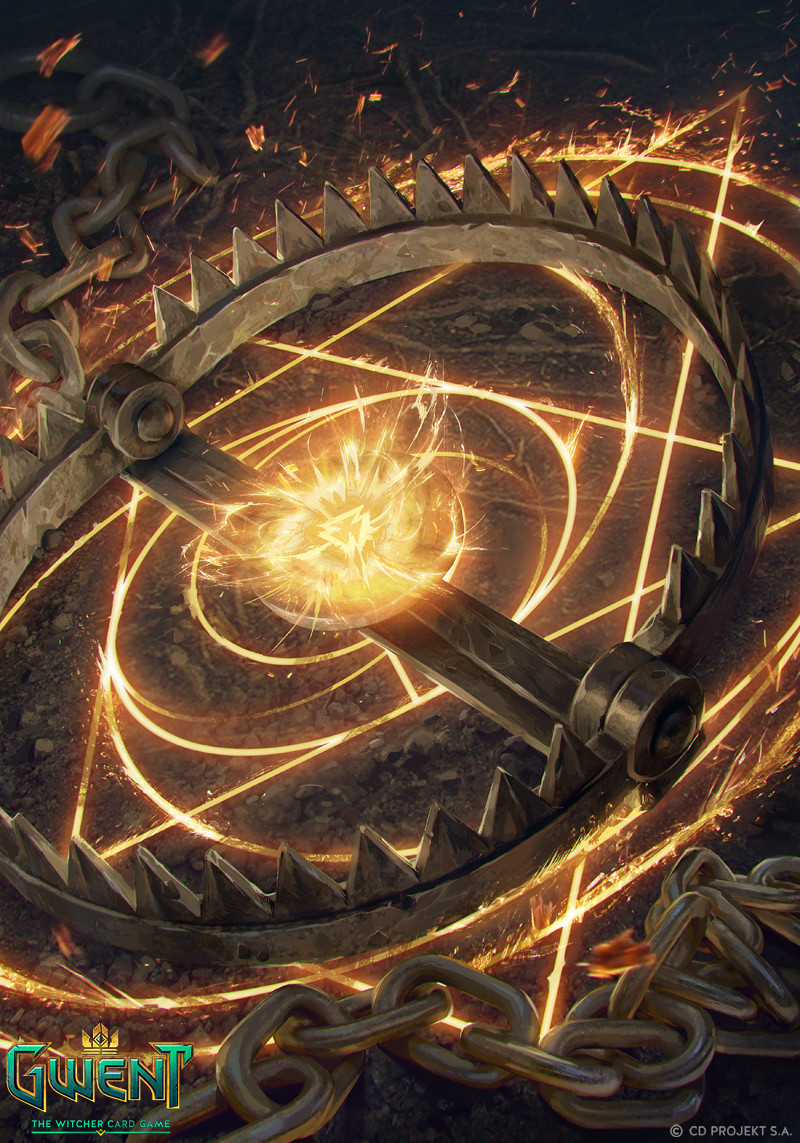



Concoctions
Concoctions are mixtures of various ingredients and elements used to aid allies and impede your foes. Concoctions require an Action and you must be able to touch the creature you wish to apply it to.
Herbal Salve. The creature regains a number of hit points equal to 1d8 + Wisdom modifier. This feature has no effect on undead or constructs.
Natural Remedy. The creature can end either one disease or one condition afflicting it. The condition can be blind, deafened, paralyzed, or poisoned.
Night Sight Ointment. The creature under the effects of this concoction gains darkvision out to a range of 60 feet for the next hour.
Sleep Spores. The target must make a Constitution saving throw against your Tricks of the Trade DC or be incapacitated for the next minute. At the end of each of its turns, the creature can make a Constitution saving throw. The effect ends if the creature takes damage or succeeds on the save.
Sightless Powder. The target must make a Dexterity saving throw against your Tricks of the Trade DC. On failure, the creature is blinded for the next minute. At the end of each of its turns, the creature can make a Dexterity saving throw. On a success, the effect ends.
Soundless Unguent. The target must make an Intelligence saving throw against your Tricks of the Trade DC. On failure, the creature is deafened for the next minute. At the end of each of its turns, the creature can make an Intelligence saving throw. On a success, the effect ends.
Trepidation Fumes. The target must make a Wisdom saving throw against your Tricks of the Trade DC or be frightened of you for the next minute. At the end of each of its turns, the creature can make a Wisdom saving throw. On a succession, the effect ends.
Ranger Conclave
While all rangers gain skill in foraging, exploration, husbandry, and martial skill, each ranger could have a different expression of their talents, depending on what skill they wish to master or the prey they prefer to hunt. Each of these skills carves out a foothold to navigate the dangers of the wild. These are represented by the conclave they choose.
Expertise Conclave
The Expertise Conclave are rangers who walk with the shadows, silent and deadly. They are trained to stalk their prey much like an ambush predator, patient and calculating. Seeking to silence threats before they can reach the broader world.
Camouflage
When you choose this archetype at 3rd level, you gain proficiency in Stealth if you don't already have it. If you are already proficient in this skill, you add double your proficiency bonus to checks you make with it.
Predator's Quarry
When you choose this archetype at 3rd level, as a bonus action, you can choose a creature you can see and mark it as your quarry. For the next minute, when you hit this creature it suffers additional damage equal to your proficiency bonus.
You can use this feature to mark a quarry a number of times equal to your proficiency bonus, and you regain all expended uses when you finish a long rest.
Escapologist
At 7th level, you are an expert in getting out of dangerous situations. You gain a climbing speed equal to your walking speed, and opportunity attacks against you are made with disadvantage.
Strategic Placement
Starting at 11th level, you excel at catching creatures unaware. When you make an attack roll against your Predator's Quarry and miss, you can use your reaction to reroll the attack roll against a different target within 60 feet of the original target.
Inexorable
At 15th level, you gain the ability to counterattack when your prey tries to sabotage you. If the target of your Predator's Quarry forces you to make a saving throw, you can use your reaction to make one weapon attack against the quarry. You make this attack immediately before making the saving throw. If the attack hits, your save automatically succeeds, in addition to the attack’s normal effects.
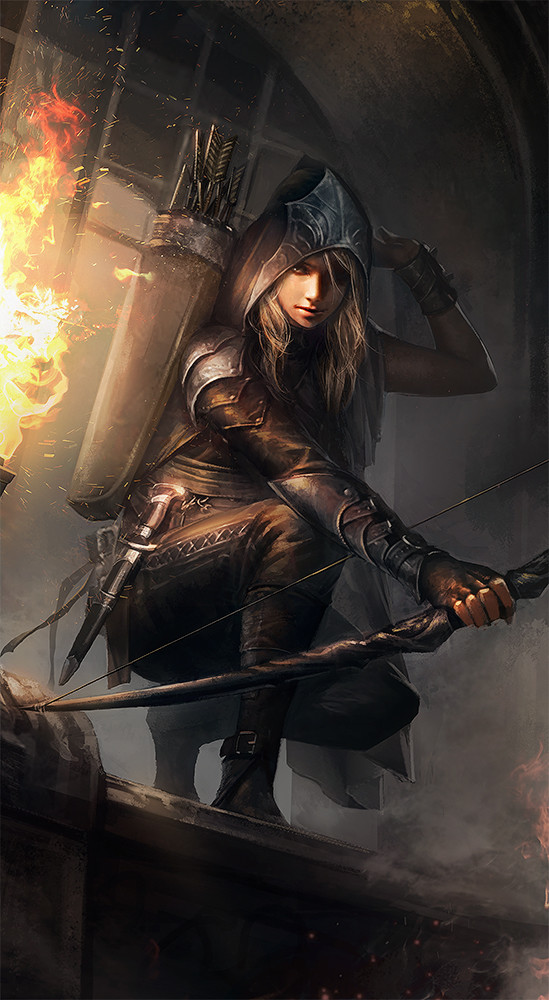

Nature Conclave
The Nature Conclave is an oddity when compared to its fellow conclaves. Where others focus on a more direct approach, this conclave takes a more indirect approach, combining knowledge with creativity. They believe that the makeup of a plant and its uses are equivalent to the mating cycles of manticores and their regenerative properties.
Botanist
When you choose this conclave at 3rd level, you gain proficiency in Nature if you don't already have it.
Additionally, whenever you make a Nature check you gain a bonus to the check equal to your Wisdom modifier (minimum of +1).
Amalgamate
At 3rd level, your knowledge of compounds and constituents allows you to create new combinations of tricks. You learn 3 additional tricks, and when you use a trick you can activate an additional different trick of the same type.
Elusive Savant
Starting at 7th level, you can predict movement and techniques a creature will perform as a result of your vast knowledge. When a creature marked by your keen eye damages you, you can reduce the damage you would receive by your proficiency bonus.
Causal Nexus
At 11th level, you can create volatile chemical reactions. When you hit a trick, you can have any number of creatures within 10 feet radius of the original target make a Dexterity save against your Trick of the Trade DC. On failure, the creature takes half the damage the trick dealt.
Neutralizing Agent
Starting at 15th level, your knowledge of cytology and ecology allows you to neutralize harmful elements. When you are damaged by acid, cold, fire, poison, lightning, or thunder, as a reaction you can half that damage to you.
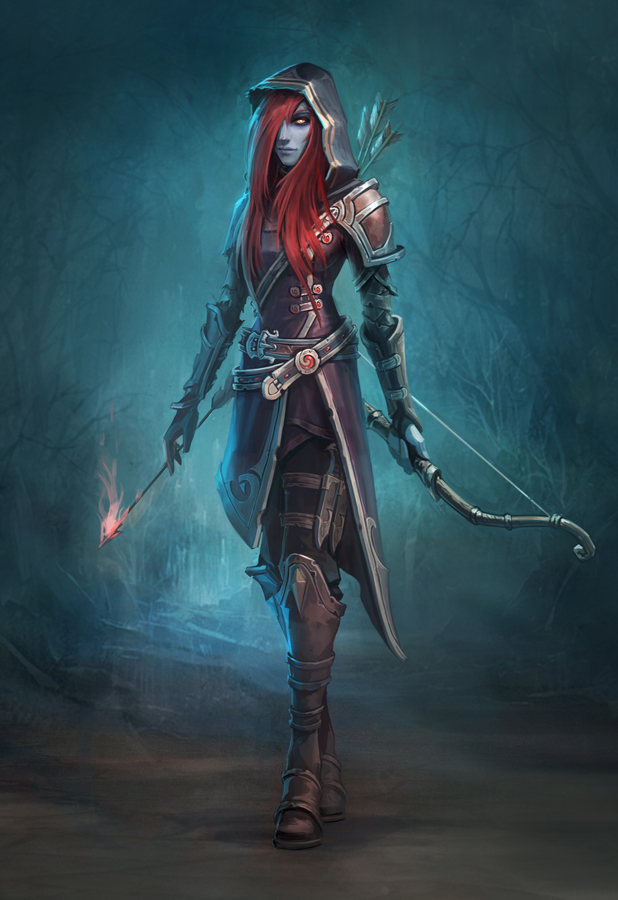
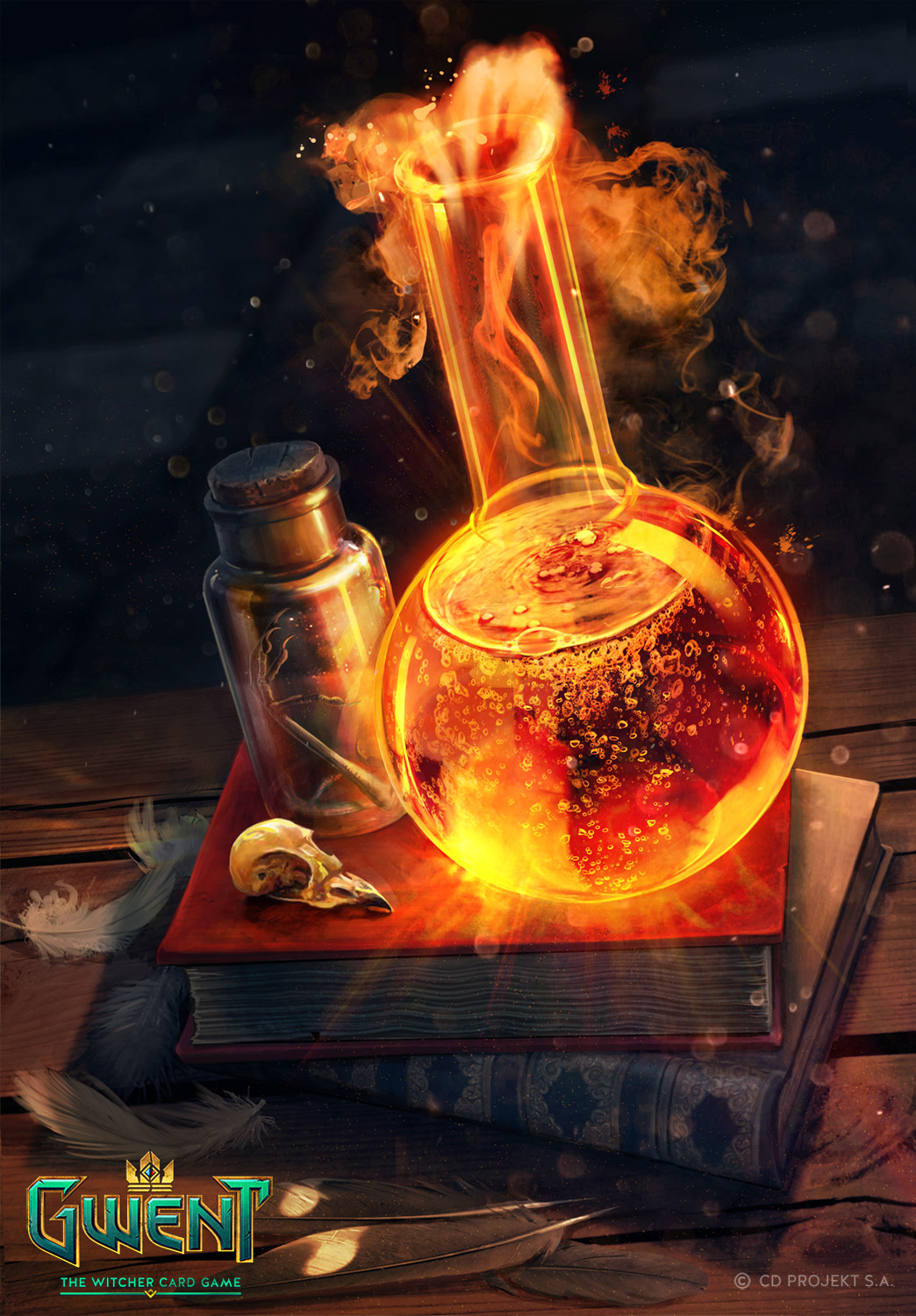





Survival Conclave
Emulating the Survival Conclave means accepting your place as the bulwark between civilization and the terrors of the wilderness. As you walk the Survival's path, you learn specialized techniques for use against the threats they face, creating situations where they strive while the others falter.
Fearless Tracker
When you choose this archetype at 3rd level, you gain proficiency in Survival if you don't already have it. If you are already proficient in this skill, you add double your proficiency bonus to checks you make with it.
Subdue
Beginning at 3rd level, your ability to rapidly adapt to the impending condition. Once per turn, you can choose to do one of the following features:
Colossus Slayer. When you hit a creature with a weapon attack, the creature takes an extra 1d8 damage if it's below its hit point maximum.
Agile Punisher. When a creature within 5 feet of you hits or misses you with an attack, you can use your reaction to attack that creature immediately after its attack, provided that you can see the creature.
Horde Breaker. When you hit with a weapon attack, you can deal 1d8 damage against a creature that is within 5 feet of the original target.
Defense in Depth
At 7th level, your experiences have taught you the ways to survive even the most harrowing dangers. When a creature hits you with an attack, you gain a +4 bonus to your AC against all subsequent attacks made by that creature for the rest of the turn. In addition, that creature's next opportunity attack made against you is made with disadvantage.
Multi-attack
At 11th level, you can strike with lethal speed and precision. You gain one of the following features of your choice.
Volley. You can use your action to make a ranged attack against any number of creatures within 10 feet radius of a point you can see within your weapon's range. You must have ammunition for each target, as normal, and you make a separate attack roll for each target.
Whirlwind Attack. You can use your action to make a melee attack against any number of creatures within 5 feet of you, with a separate attack roll for each.
Nimble Deterrence
At 15th level, your ability to survive in the fray of combat has integrated into your fighting style. You gain one of the following features of your choice.
Evasion. When you are subjected to an effect that allows you to make a Dexterity Saving throw to take only half damage, you instead take no damage if you succeed on the saving throw, and only half damage if you fail.
Uncanny Dodge When an attacker that you can see hits you with an attack, you can use your reaction to halve the attack’s damage against you.
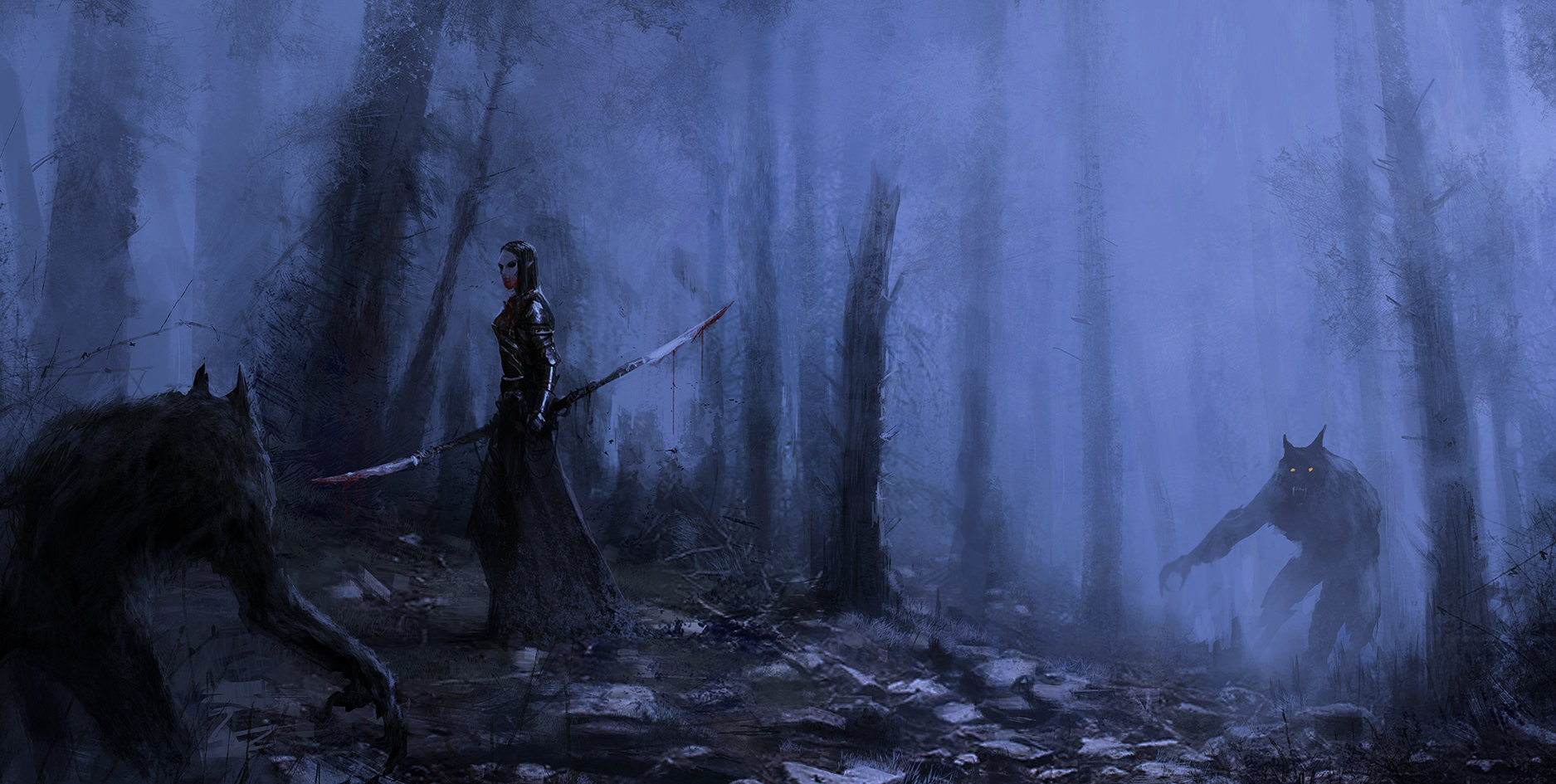




Wildlife Conclave
The Wildlife Conclave bodies a friendship between the civilized races and the beasts of the world. United in focus, beast and ranger work as one to fight the monstrous foes that threaten civilization and wilderness alike.
Whisperer of Beast
When you choose this archetype at 3rd level, you gain proficiency in Animal Handling if you don't already have it. If you are already proficient in this skill, you add double your proficiency bonus to checks you make with it.
Animal Companion
At 3rd level, you gain a beast companion that accompanies you on your adventures and is trained to fight alongside you. The beast is friendly to you and your companions and obeys your commands. Choose its stat block: Terrestrial Beast, Aquatic Beast, or Aviary Beast -which uses your proficiency bonus (PB) in several places. Your companion options are detailed at the end of the class description. You also determine the kind of animal the beast is, choosing a kind appropriate for the stat block.
In combat, the beast takes its turn on your initiative. It can move and use its reaction on its own, but the only action it takes is the Dodge action, unless you take a bonus action on your turn to command it to take another action. That action can be one in its stat block, Dash, Disengage, Help, or some other action. You can also sacrifice one of your attacks when you take the Attack action to command the beast to take the Attack action. If you are incapacitated, the beast can take any action of its choice, not just Dodge.
If your beast is ever slain, you can obtain another one by spending 8 hours of work and the expenditure of 25 gp worth of rare herbs and fine food, to make a bond with another beast that isn’t hostile to you, either the same type of beast as before or a different one. If you use this ability to return a former animal companion to life while you have a current animal companion, your current companion leaves you and is replaced by the restored companion.
Bestial Bonds
Beginning at 7th level, as a bonus action, you can expend a hit dice to heal your companion for 1d8 plus your wisdom modifier, plus an additional 1d8 per additional hit dice spent.
Additionally, your companion's attacks count as magical for the purpose of overcoming resistance and immunity to nonmagical attacks and damage.
Kill Command
At 11th level, when you use your bonus action to have your companion make an attack, you can have it make one additional attack.
Bestial Endurance
At 15th level, whenever an attacker that your companion can see hits it with an attack, it can use its reaction to halve the attack's damage against it.


Terrestrial Beast
Medium beast
- Armor Class 13 + PB (natural armor)
- Hit Points 5 + five times your ranger level (the beast has a number of Hit Dice [d8s] equal to your ranger level)
- Speed 40 ft., climb 40 ft.
STR DEX CON INT WIS CHA 14 (+2) 14 (+2) 15 (+2) 8 (-1) 14 (+2) 11 (-)
- Senses: darkvision 60 ft., passive Perception 12
- Proficiency Bonus (PB): equals your bonus
- Languages: understands the languages you speak
- Charge: If the beast moves at least 20 feet straight toward a target and then hits it with a maul attack on the same turn, the target takes an extra ld6 slashing damage. If the target is a creature, it must succeed on a Strength saving throw against your Trick of the Trade DC or be knocked prone.
- Bond: You can add your proficiency bonus to any ability check or saving throw that the beast makes.
Actions
Maul. Melee Weapon Attack: your Wisdom modifier plus + PB to hit, reach 5 ft., one target. Hit: 1d8 + 2 + PB slashing damage.
Aquatic Beast
Medium beast
- Armor Class 13 + PB (natural armor)
- Hit Points 5 + five times your ranger level (the beast has a number of Hit Dice [d8s] equal to your ranger level)
- Speed 5 ft., swim 60 ft.
STR DEX CON INT WIS CHA 14 (+2) 14 (+2) 15 (+2) 8 (-1) 14 (+2) 11 (-)
- Senses: darkvision 60 ft., passive Perception 12
- Proficiency Bonus (PB): equals your bonus
- Languages: understands the languages you speak
- Amphibious: The beast can breathe both air and water.
- Bond: You can add your proficiency bonus to any ability check or saving throw that the beast makes.
Actions
Binding Strike. Melee Weapon Attack: your Wisdom modifier plus + PB to hit, reach 5 ft., one target. Hit: 1d6 + 2 + PB piercing or bludgeoning damage (your choice), and the target is grappled (escape DC equals your tricks of the trade save DC). Until this grapple ends, the beast can't use this attack on another target.
Aviary Beast
Small beast
- Armor Class 13 + PB (natural armor)
- Hit Points 4 + four times your ranger level (the beast has a number of Hit Dice [d6s] equal to your ranger level)
- Speed 10 ft., fly 60 ft.
STR DEX CON INT WIS CHA 14 (+2) 14 (+2) 15 (+2) 8 (-1) 14 (+2) 11 (-)
- Senses: darkvision 60 ft., passive Perception 12
- Proficiency Bonus (PB): equals your bonus
- Languages: understands the languages you speak
- Flyby: The beast doesn't provoke opportunity attacks when it flies out of an enemy's reach.
- Bond: You can add your proficiency bonus to any ability check or saving throw that the beast makes.
Actions
Shred. Melee Weapon Attack: your Wisdom modifier plus + PB to hit, reach 5 ft., one target. Hit: 1d4 + 3 + PB slashing damage.
Art
Images used in this document and links to the originals are listed below.
Document Image: Snow Hunter by Wangjie Li
Cover Art: Fantasy Hunter by Wangjie Li
Page 3: Expert Trackers by Alexandr Elichev
Page 4: Seek the Wilds by Anna Steinbauer
Page 5: The Hunt by William Wu
Page 6: Gwent Card by Anna Podedworna
Page 7: Ointment by Bogna Gawrońska
Page 8: MABINOGI DUEL_Hunter Rijet by JuYoung Ha (untitle)
Page 9: Drow by YasenStoilov
Page 9: Swallow Elixir by Aleksandra Wojtas
Page 10: Dark Hunter by Jakub Rozalski
Page 11: Jeehyunglee NFT Edition No.5 by JeeHyung lee